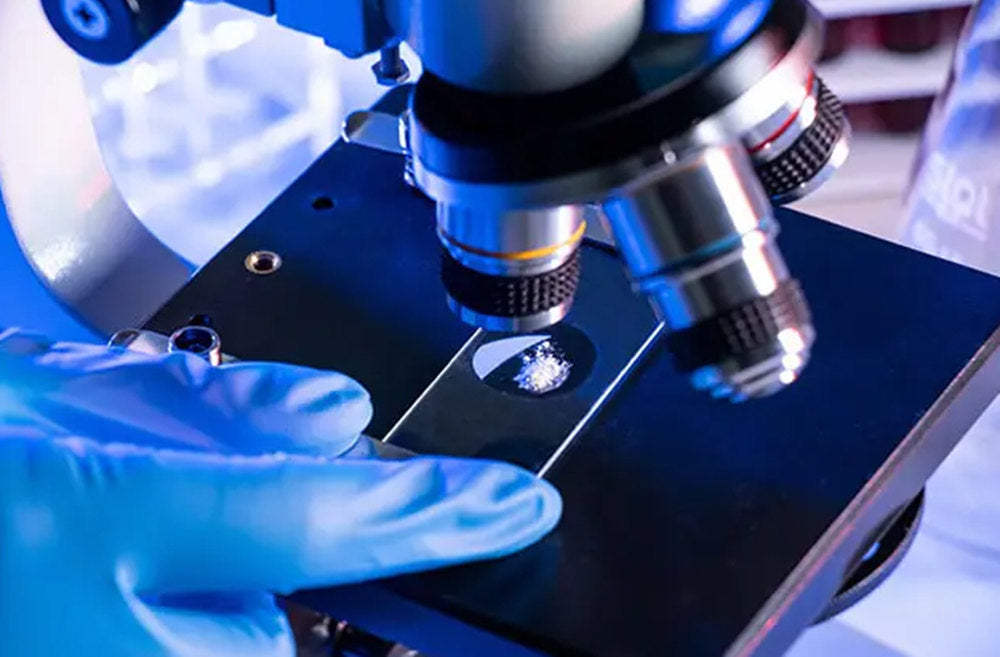(1) How to choose the best microscope?
The microscope opened up a whole new world to the human eye, revealing for the first time hundreds of "new" tiny animals and plants, and the inner workings of everything from the human body to plant fibers.
Microscopes also help scientists discover new species and doctors treat anterior chamber disease. So how do you choose the best microscope? The choice of the microscope, in fact, depends on what use you are, different roles will choose a different microscope.
The ultimate guide to buying the best microscope you must see in 2022 will help you find the right product for you when you shop for a microscope.
1. What kind of microscope should be used for what kind of samples?
According to the observed samples and different functions, microscopes can be divided into an orthotopic microscope, inverted microscope, type microscope, photic microscope, phase contrast microscope, polarized microscope, metallographic microscope, confocal laser microscope, etc.

The forward microscope is more suitable for the observation of slides, the inverted microscope is more suitable for the observation of Petri dishes, the phase-contrast microscope is more suitable for the observation of unstained biological specimens of live fine points, and the photic microscope is suitable for the imaging of spontaneous photic and induced photic specimens, etc.
2. Understand the difference between upside-down and upside-down microscopes and make a purchase
The metallographic microscope is also called a material microscope, which is mainly used to observe the structure of metal tissue. It can be divided into forwarding metallographic microscope and inverted metallographic microscope.
Positive metallographic microscope imaging positive during observation, which brings great convenience to the user's observation and discrimination, in addition to the 20 ~ 30mm height of metal samples for analysis and identification, because of the daily habits of people, so more widely used in transparent, translucent or opaque substances. Larger than 3 microns and smaller than 20 microns observe the target.
The inverted metallographic microscope is used to identify and analyze the microstructure of various metals and alloys by means of optical plane imaging.
It is an important tool for metallographic research of metal physics and can be widely used in factories or laboratories for casting quality, raw material inspection, or research and analysis of material metallographic structure after processing, so as to provide intuitive analysis results.

It is the key equipment for casting, smelting and heat treatment quality identification, and analysis in mining, metallurgy, manufacturing, and mechanical processing industries.
3. Observe the choice of mode
Traditional microscopes are examined through eyepieces, but great progress has been made until now. At present, there are two kinds of microscope observation modes on the market: eyepiece observation and external computer (monitor, TV lamp) equipment for observation.
The advantages of eyepiece observation are clear imaging and prominent details, but the eyes will sting for a long time, accompanied by dizziness, decreased vision, and even vomiting symptoms.
And through the monitor observation can greatly reduce the degree of eye fatigue, can share the effect of observation with others in real-time, and can analyze the picture, save, and so on.
4. Consider the characteristics of the detected object
If you are using the microbiological field, that is, for cell testing, section, or petri dish observations, the recommendation is to buy a "biomicroscope".
The biological microscope is mainly used to observe organisms (such as biological cells, bacteria, and living tissue), observed objects are required to be transparent or translucent and powder, fine particles, and other objects. It is the most common and versatile microscope.

The biological microscope can be divided into a vertical biological microscope and an inverted biological microscope according to the characteristics of the samples observed.
The vertical biological microscope is mainly used for biological section observation, while the inverted biological microscope is needed for the observation of the living body cultured in Petri dishes. The use of biological microscopy will not be described too much.
5. The quality of optical system
Resolution is the ability to observe sample details and the speed of image resolution. An objective lens is very important in the optical system, the higher the numerical aperture of the objective lens, the better the resolution.
The user needs to see the level of detail and budget to choose an objective lens with the right numerical aperture. In addition to the numerical aperture, the degree to which a microscope objective corrects spherical and chromatic aberrations needs to be evaluated.
Choose the best objective lens within your budget. The quality of the objective will directly affect the quality of the data, so this is a very important factor to consider.
6. Light and easy to operate
Lightness is relative. Apexel's 200X phone microscope lens is light and compact, so it can be used directly on the phone, and children can handle it without any problems.
Whether you use it outdoors or indoors to observe your target object, it's no burden. It can bring you different visual effects to observe and discover the invisible microscopic world around you.
7. Consider what your purchasing budget is
According to the application of observation, a microscope can be divided into general observation, clinical application, and research. According to the brand, the price gap in the current market is generally several times to more than ten times, you can decide according your existing budget to buy what price microscope.
Try to find a wide variety of companies with strong technology within your budget. Here are some microscopes with good cost performance.
(2) Conclusions
As a necessary tool in the field of life science, the microscope has complex structures and various configurations. According to different configurations and structures, the corresponding price varies greatly.
That many users in the actual procurement process, see a long list of configurations and do not know how to choose. I hope reading this guide will help you when you are about to buy a microscope. Go and get it!


Share:
Step into the world of polarized light microscopy